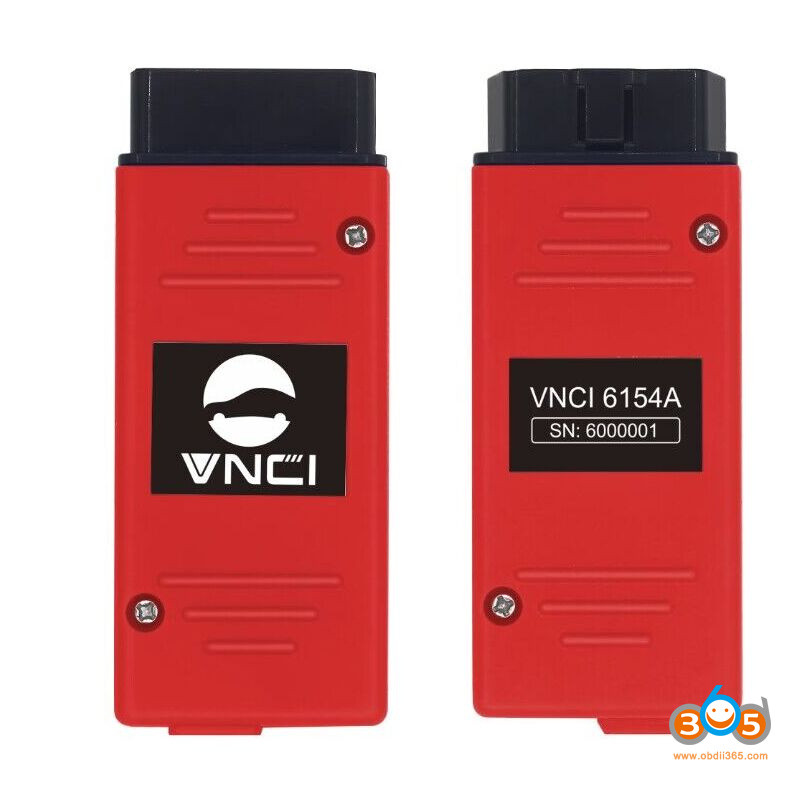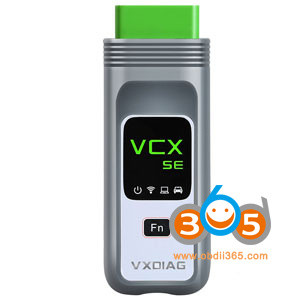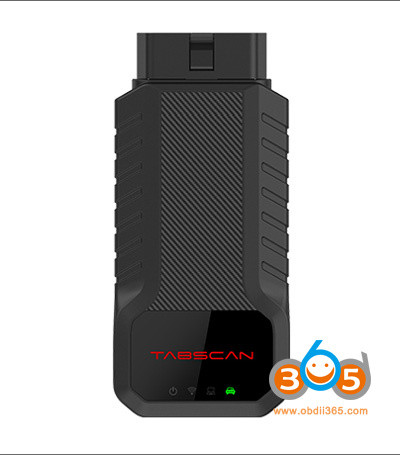VAS6154 vs VCX SE 6154: Which Diagnostic Tool is Best?
Navigating the world of automotive diagnostics can be tricky, especially when choosing the right tools for the job. This guide, brought to you by VCCarTool, helps you compare VAS6154 and VCX SE 6154 diagnostic tools to help you make an informed decision. Discover the key differences, pros, and cons to optimize your workshop’s efficiency. Want personalized advice? Contact VCCarTool on WhatsApp: +1 (901) 414 – 1927 for expert support on selecting the perfect automotive diagnostic solutions, including vehicle communication interfaces, ECU programming tools, and auto fault code readers.
1. Understanding the Essentials: VAS6154 vs VCX SE 6154
The VAS6154 and VCX SE 6154 are both diagnostic tools designed for Volkswagen (VW), Audi, Skoda, Seat, Bentley, and Lamborghini vehicles. They allow technicians to perform a wide range of functions, including reading and clearing fault codes, data logging, component testing, and ECU programming. However, there are some crucial differences between these two tools that may make one a better choice for your specific needs. Let’s dive in to uncover these nuances.
1.1. Key Differences at a Glance
| Feature | VAS6154 | VCX SE 6154 |
|---|---|---|
| Vehicle Coverage | VW, AUDI, SKODA, SEAT, Bentley, Lamborghini (1995-2023) | VW, Audi, Skoda, Seat, Bentley (2001-2022) |
| CAN FD Protocol | Yes | No |
| DoIP Protocol | Yes | No |
| Original ODIS Driver Compatibility | Yes | Yes |
| 3rd Party Driver/Device Manager | No | Yes (VX Manager) |
| Latest ODIS-S Compatibility | Yes (V23) | Yes (V23) |
| Latest ODIS-E Compatibility | Yes (V17) | Yes (V17) |
| J2534 Passthru | No | Yes |
| Connection | USB, WiFi, WLAN | USB, WiFi, WLAN |
| Custom Serial Number | Yes | No |
| Price | $119 | $169 |
1.2 What are the key features of diagnostic tools
Diagnostic tools are pivotal in modern automotive repair, offering a wide range of functionalities that streamline the repair process and enhance diagnostic accuracy. These tools interface with a vehicle’s onboard computer to extract and interpret data, enabling technicians to quickly identify and address issues. Let’s explore the key features that define these essential devices:
- Fault Code Reading and Clearing: This is the fundamental function of any diagnostic tool, allowing users to retrieve Diagnostic Trouble Codes (DTCs) from the vehicle’s ECU. Once a fault is identified and rectified, the tool can clear these codes, resetting the vehicle’s system.
- Live Data Streaming: Provides real-time data from various sensors and components within the vehicle. This live feed allows technicians to monitor performance parameters, such as engine temperature, RPM, and sensor outputs, helping to pinpoint irregularities or failures as they occur.
- Actuation Tests: Enables technicians to activate specific components to test their functionality. For example, a mechanic can use this feature to turn on a fuel pump or engage a solenoid to ensure it operates correctly.
- ECU Programming and Coding: More advanced diagnostic tools support ECU programming, allowing technicians to update or reprogram the vehicle’s electronic control units. This is crucial for installing software updates, replacing faulty ECUs, or enabling new features.
- Bi-Directional Control: Facilitates two-way communication with the vehicle’s systems. This allows the tool to send commands to the vehicle to perform tests and adjustments, as well as receive data back from the vehicle.
- Vehicle System Scanning: Scans all electronic systems within the vehicle to check for faults. This comprehensive scan can quickly identify issues that might not be immediately apparent, ensuring a thorough diagnostic process.
- Freeze Frame Data: Captures a snapshot of the vehicle’s data at the moment a fault code is triggered. This information can be invaluable in diagnosing intermittent issues, as it provides context around the conditions when the problem occurred.
- OBD-II Compatibility: Ensures the tool can interface with any vehicle that supports the OBD-II standard, providing access to basic diagnostic information across a wide range of makes and models.
- Data Logging: Records data over a period of time, allowing technicians to analyze vehicle performance under various conditions. This is particularly useful for diagnosing issues that only occur during specific driving conditions.
- Reporting and Analysis: Generates detailed reports that summarize diagnostic findings. These reports can include fault codes, live data readings, and recommended repairs, facilitating communication between technicians and customers.
By offering these features, diagnostic tools significantly enhance the efficiency and accuracy of automotive repairs, enabling technicians to quickly diagnose and resolve complex issues in modern vehicles. If you have any questions, don’t hesitate to contact VCCarTool on WhatsApp: +1 (901) 414 – 1927 for expert advice and support.
 VAS 6154A diagnostic tool
VAS 6154A diagnostic tool
VNCI 6154A Diagnostic Tool showcasing its compact design and connectivity features for modern vehicle diagnostics.
2. VNCI 6154A: The Budget-Friendly Option
The VNCI 6154A is often seen as the entry-level option, prized for its simplicity and cost-effectiveness. Let’s delve into its strengths and limitations:
2.1. Advantages of VNCI 6154A
- Affordability: The VNCI 6154A is the most budget-friendly option, making it an excellent choice for technicians or workshops with limited budgets.
- Ease of Use: It is designed to be plug-and-play, which means you can start using it without complicated setup procedures.
- No License Required: Unlike some other diagnostic tools, the VNCI 6154A does not require any licenses to operate, which can save you money in the long run.
- Original Driver Compatibility: It runs original drivers without modifications, mimicking genuine devices, which simplifies the installation process.
- Speed and Efficiency: Users have reported that it works quickly without disconnections, and the auto-scan feature completes in less than a minute.
- Customizable Serial Number: The VNCI firmware update tool allows you to customize the serial number.
- DoIP and CAN FD Protocol Support: It supports the latest DoIP and CAN FD protocols, ensuring compatibility with newer vehicles.
2.2. Limitations of VNCI 6154A
- VAG-Only: It is designed exclusively for VAG (Volkswagen Audi Group) vehicles, limiting its use if you work on a variety of car brands.
- No J2534 Passthru: It cannot be used as a J2534 passthru device, which means it’s not suitable for reprogramming ECUs on non-VAG vehicles.
3. VXDIAG VCX SE 6154: The Versatile Workhorse
The VXDIAG VCX SE 6154 is a more versatile tool that offers a broader range of features and capabilities. Let’s explore its strengths and weaknesses:
3.1. Advantages of VXDIAG VCX SE 6154
- Simulates VAS6154: It can simulate a VAS6154 device, providing similar functionality to the original tool.
- J2534 Passthru Support: It can be used as a J2534 passthru device for many original factory software applications, making it suitable for reprogramming ECUs on various car brands.
- Extra Brand Support: Users can add support for other car brands to the device by paying for additional licenses.
- Good for Newer Models: It works exceptionally well on newer models (2014 and later), including vehicles on new platforms.
3.2. Limitations of VXDIAG VCX SE 6154
- License Requirement: It requires a license that needs to be renewed periodically (e.g., every 60 days), adding to the overall cost.
- Driver Updates: You need to update the driver to use the latest ODIS software.
- Older Model Performance: It may not perform as well on older Kline models.
 VXDIAG VCX SE 6154 Scanner
VXDIAG VCX SE 6154 Scanner
VXDIAG VCX SE 6154 Scanner showcasing its comprehensive diagnostic capabilities and compatibility with various vehicle brands.
4. CAN FD and DOIP: Why They Matter
CAN FD (CAN Flexible Data-Rate) and DOIP (Diagnostics over Internet Protocol) are advanced communication protocols used in newer vehicles. Understanding these protocols is crucial when selecting a diagnostic tool:
4.1. CAN FD Protocol
- Faster Data Transfer: CAN FD allows for faster data transfer rates compared to traditional CAN, which is essential for diagnosing complex systems in modern vehicles.
- Increased Bandwidth: It provides increased bandwidth, enabling more data to be transmitted simultaneously.
4.2. DOIP Protocol
- Diagnostics Over IP: DOIP enables diagnostics over the internet protocol, allowing for remote diagnostics and ECU programming.
- Enhanced Security: It offers enhanced security features, protecting vehicle systems from unauthorized access.
5. Tabscan 6154C: An Alternative to Consider
The Tabscan 6154C is another alternative diagnostic tool that shares some similarities with the VCX SE 6154. Here’s a look at its key features:
5.1. Key Features of Tabscan 6154C
- VAS6154 and Passthru Device: It can be used as both a VAS6154 diagnostic tool and a passthru device.
- Tabscan Driver: It is based on the Tabscan driver.
- Mobile App Support: Supports the OBD GO APP on mobile phones.
5.2. Limitations of Tabscan 6154C
- Limited Reviews: There aren’t many user reviews available, making it difficult to gauge its performance and reliability.
- ODIS Compatibility: ODIS V23 compatibility hasn’t been fully tested.
 Tabscan 6154c
Tabscan 6154c
Tabscan 6154C highlighting its advanced diagnostic features and compatibility with mobile devices for enhanced user experience.
6. Making the Right Choice for Your Workshop
Choosing the right diagnostic tool depends on your specific needs and budget. Here’s a summary to help you decide:
6.1. When to Choose VNCI 6154A
- You primarily work on VAG vehicles.
- You need a budget-friendly option.
- You want a tool that is easy to use and requires no licenses.
- You need support for the latest CAN FD and DOIP protocols.
6.2. When to Choose VXDIAG VCX SE 6154
- You work on a variety of car brands and need a passthru device.
- You are willing to pay for additional licenses to support other brands.
- You primarily work on newer models (2014 and later).
6.3. When to Consider Tabscan 6154C
- You need a versatile tool that can function as both a VAS6154 and a passthru device.
- You want the option to use a mobile app for diagnostics.
7. Detailed Comparison Table
To make your decision even easier, here’s a detailed comparison table summarizing the key features of each tool:
| Feature | VNCI 6154A | VXDIAG VCX SE 6154 | Tabscan 6154C |
|---|---|---|---|
| Vehicle Coverage | VW, AUDI, SKODA, SEAT, Bentley, Lamborghini (1995-2023) | VW, Audi, Skoda, Seat, Bentley (2001-2022) | VW, Audi, Skoda, Seat, Bentley (2001-2022) |
| CAN FD Protocol | Yes | No | No |
| DoIP Protocol | Yes | No | Yes |
| Original ODIS Driver Compatibility | Yes | Yes | – |
| 3rd Party Driver/Device Manager | – | Yes (VX Manager) | Yes |
| Latest ODIS-S Compatibility | Yes (V23) | Yes (V23) | ODIS V23 not tested |
| Latest ODIS-E Compatibility | Yes (V17) | Yes (V17) | ODIS-E 17 not tested |
| J2534 Passthru | No | Yes | Yes |
| Connection | USB, WiFi, WLAN | USB, WiFi, WLAN | USB, Bluetooth |
| Custom Serial Number | Yes | No | No |
| Price | $119 | $169 | $189 |
8. Step-by-Step Guide: Setting Up Your Diagnostic Tool
Once you’ve chosen the right diagnostic tool, setting it up properly is crucial for optimal performance. Here’s a general step-by-step guide:
- Install the Software: Insert the CD or download the software from the provided link. Follow the on-screen instructions to install the diagnostic software on your computer.
- Connect the Device: Connect the diagnostic tool to your computer via USB. For wireless connections, enable WiFi or Bluetooth on your computer and pair with the device.
- Install Drivers: If necessary, install the drivers for the diagnostic tool. The software may prompt you to do this automatically, or you may need to install them manually from the device manager.
- Configure the Software: Open the diagnostic software and configure the settings according to your preferences. This may include selecting the vehicle make and model, communication protocol, and language.
- Connect to the Vehicle: Plug the diagnostic tool into the vehicle’s OBD-II port. Turn on the vehicle’s ignition.
- Start Diagnostics: Follow the software’s instructions to start diagnosing the vehicle. You can read and clear fault codes, view live data, perform component tests, and program ECUs.
9. Maximizing Your Diagnostic Efficiency
To get the most out of your diagnostic tool, consider these tips:
- Keep Software Updated: Regularly update the diagnostic software to ensure compatibility with the latest vehicle models and access to the newest features and bug fixes.
- Use a Stable Internet Connection: For online functions like ECU programming, use a stable internet connection to prevent interruptions and data corruption.
- Consult Vehicle Manuals: Refer to the vehicle’s service manuals for specific diagnostic procedures and troubleshooting tips.
- Join Online Forums: Participate in online forums and communities to share knowledge, ask questions, and learn from other technicians.
- Attend Training Courses: Consider attending training courses to improve your diagnostic skills and learn advanced techniques.
10. Real-World Examples: Case Studies
Here are a few real-world examples to illustrate the benefits of using the right diagnostic tool:
10.1. Case Study 1: Diagnosing a Faulty Oxygen Sensor
A technician used the VXDIAG VCX SE 6154 to diagnose a faulty oxygen sensor in a 2016 Audi A4. By viewing live data, the technician was able to identify that the oxygen sensor was not responding correctly. They then performed an actuation test to confirm the sensor was indeed faulty.
10.2. Case Study 2: Programming a New ECU
A workshop used the VNCI 6154A to program a new ECU in a 2020 Volkswagen Golf. The technician connected the tool to the vehicle, selected the ECU programming function, and followed the on-screen instructions to successfully program the new ECU.
11. Addressing Common Diagnostic Challenges
Even with the best diagnostic tools, you may encounter challenges. Here are some tips for addressing common issues:
- Communication Errors: Check the connection between the diagnostic tool and the vehicle. Ensure the OBD-II port is clean and the cable is securely connected.
- Software Compatibility Issues: Make sure the diagnostic software is compatible with your computer’s operating system and that you have the latest drivers installed.
- Inaccurate Readings: Verify that the vehicle’s battery is fully charged and that all sensors are functioning correctly.
- Unknown Fault Codes: Consult vehicle service manuals or online forums to research unknown fault codes.
If you have any further questions or need assistance, don’t hesitate to contact VCCarTool on WhatsApp: +1 (901) 414 – 1927. We are here to help you navigate any challenges you may encounter.
12. Future Trends in Automotive Diagnostics
The field of automotive diagnostics is constantly evolving. Here are some future trends to watch out for:
- Artificial Intelligence (AI): AI is being used to analyze diagnostic data, identify patterns, and provide technicians with more accurate and efficient diagnostic solutions.
- Remote Diagnostics: Remote diagnostics allows technicians to diagnose and repair vehicles remotely, reducing downtime and improving customer satisfaction.
- Augmented Reality (AR): AR is being used to overlay diagnostic information onto the vehicle, providing technicians with a more intuitive and hands-on diagnostic experience.
- Predictive Maintenance: Predictive maintenance uses diagnostic data to predict when a vehicle component is likely to fail, allowing technicians to perform preventative maintenance and avoid costly breakdowns.
Stay ahead of the curve by embracing these emerging technologies and continuously improving your diagnostic skills.
13. Expert Opinions: What Professionals Say
According to industry experts, the choice between VAS6154, VCX SE 6154, and Tabscan 6154C depends on the specific needs of the workshop and the types of vehicles they service. Professionals emphasize the importance of considering factors like vehicle coverage, protocol support, and budget when making a decision.
14. Why Choose VCCarTool for Your Diagnostic Needs?
At VCCarTool, we understand the challenges that automotive technicians and workshop owners face when selecting diagnostic tools. That’s why we offer a wide range of high-quality diagnostic solutions to meet your specific needs.
14.1. Benefits of Choosing VCCarTool
- Expert Advice: Our team of experienced professionals can provide you with expert advice and support to help you choose the right diagnostic tools for your workshop.
- Competitive Prices: We offer competitive prices on all our diagnostic tools, ensuring you get the best value for your money.
- Extensive Product Range: We offer a wide range of diagnostic tools from leading brands, so you can find the perfect solution for your needs.
- Technical Support: We provide technical support to help you troubleshoot any issues you may encounter with your diagnostic tools.
14.2. Get in Touch
Ready to enhance your diagnostic capabilities? Contact VCCarTool today!
- WhatsApp: +1 (901) 414 – 1927
- Email: [email protected]
- Website: vccartool.com
Our team is ready to assist you in finding the perfect diagnostic solutions to streamline your operations and improve your service quality.
15. Frequently Asked Questions (FAQ)
1. What is the main difference between VAS6154 and VCX SE 6154?
The VAS6154 generally refers to the original diagnostic tool for VAG vehicles, while the VCX SE 6154 is a third-party alternative that simulates the VAS6154 but also offers J2534 passthru capabilities for broader vehicle compatibility.
2. Does the VNCI 6154A support online programming?
Yes, the VNCI 6154A supports online programming with an online account.
3. Can the VXDIAG VCX SE 6154 be used on non-VAG vehicles?
Yes, the VXDIAG VCX SE 6154 can be used on non-VAG vehicles as a J2534 passthru device.
4. Do I need a license to use the VNCI 6154A?
No, the VNCI 6154A does not require any licenses to operate.
5. Which tool supports the latest CAN FD protocol?
The VNCI 6154A supports the CAN FD protocol.
6. Is the Tabscan 6154C compatible with ODIS V23?
Compatibility with ODIS V23 has not been fully tested for the Tabscan 6154C.
7. Can I customize the serial number on the VXDIAG VCX SE 6154?
No, you cannot customize the serial number on the VXDIAG VCX SE 6154.
8. Which tool is better for older Kline models?
The VXDIAG VCX SE 6154 may not perform as well on older Kline models. The VNCI 6154A might be a better option for older vehicles within the VAG range.
9. What operating systems are compatible with the VXDIAG VCX SE 6154?
The VXDIAG VCX SE 6154 is recommended for use with Windows 10 64bit.
10. How often do I need to renew the license for the VXDIAG VCX SE 6154?
The license for the VXDIAG VCX SE 6154 typically needs to be renewed every 60 days.Do you have any more questions? Contact VCCarTool on WhatsApp: +1 (901) 414 – 1927 for instant answers and support.
16. Conclusion
Choosing the right diagnostic tool is essential for any automotive workshop. Whether you opt for the budget-friendly VNCI 6154A, the versatile VXDIAG VCX SE 6154, or another alternative, understanding their strengths and limitations is key. Evaluate your specific needs, consider your budget, and make an informed decision to optimize your diagnostic efficiency.
Remember, VCCarTool is here to support you every step of the way. If you need further assistance or have any questions, please don’t hesitate to reach out. Contact us on WhatsApp: +1 (901) 414 – 1927, email us at [email protected], or visit our website at vccartool.com. Let VCCarTool be your trusted partner in automotive diagnostics.
Ready to upgrade your diagnostic capabilities? Contact VCCarTool on WhatsApp: +1 (901) 414 – 1927 now for expert advice and exclusive deals on diagnostic tools.
